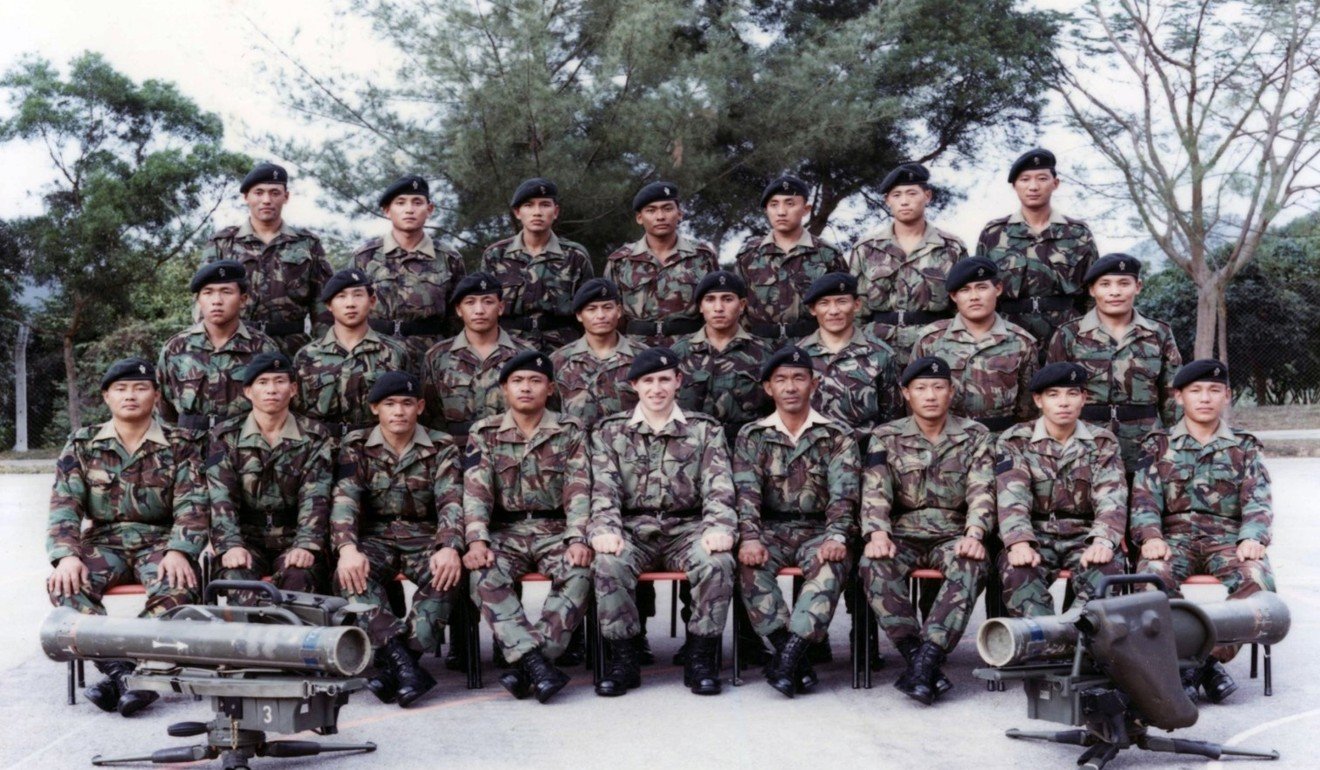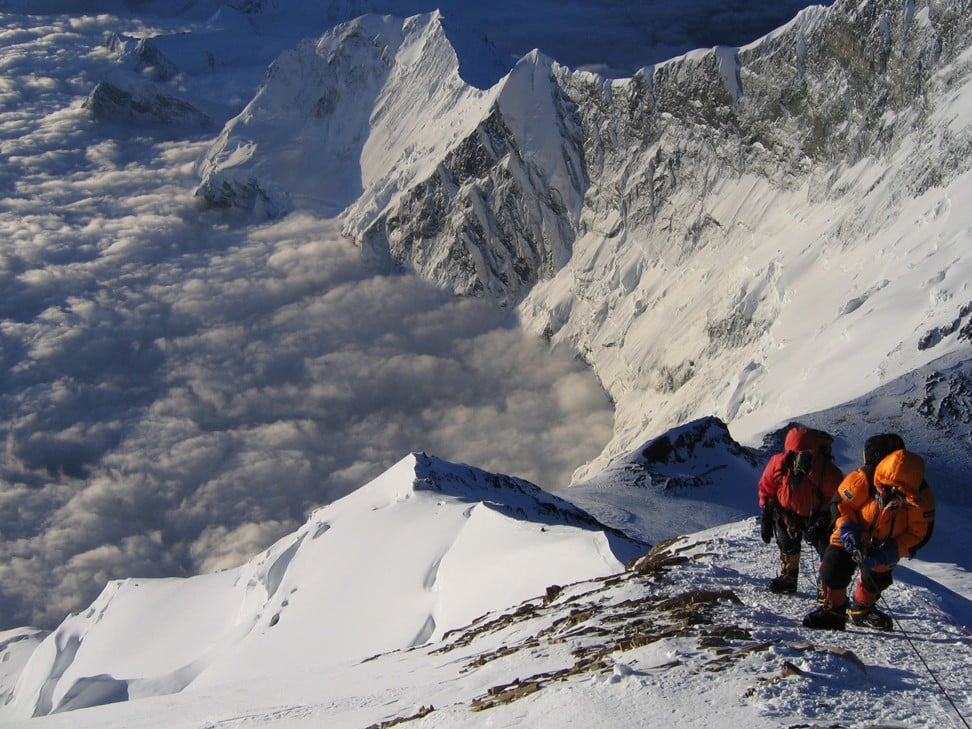
Everest climber Adrian Hayes on a challenge that was even harder than tackling K2
- The British adventurer talks about his unconventional education, his experiences on the notoriously difficult mountain K2 and life’s greatest challenge
- He reflects on the advantages of climbing in the pre-social-media age, when there wasn’t the urge to to show the world ‘look where I am’, ‘look what I’ve achieved’

THE GREAT OUTDOORS I was born in 1959 and grew up in the New Forest, in the south of England. I have two brothers – one older and one younger – and our childhood was spent outdoors. I was fascinated by the world we lived in. I had a globe that I used to look at for hours. Aged 12, my walls were covered with pictures of polar explorers. My heroes were British climber Chris Bonington and explorer Sir Ranulph Fiennes.
Looking back, I think there was a desire for escape. It was a happy childhood, but I had struggles. I was shy and reserved, and I wasn’t great at school; I left at 16 with five GCSEs and went travelling. I hitchhiked to Norway and worked in farming there; I farmed in New Zealand; I was a builder’s labourer and a bricklayer. In between that I was climbing mountains – I had learned to climb in Scotland. It was six years of the university of life, embracing every outdoor adventure I could.
A SOLDIER’S LIFE I realised there’s an organisation that pays you to do that, so I joined the army. I chose the reserve unit of the SAS (Special Air Service), which was two years of full-time soldiering. I managed to get into the Royal Military Academy Sandhurst and I was commissioned in 1985 with the Gurkhas. I did two years in Hong Kong, two in Brunei, two more in Hong Kong and then took a secondment to southern Oman.
After eight years with the Gurkhas, I felt it was time to leave. The chances of commanding a regiment were slim and I could see my life in the army moving towards pen-pushing.

EYE ON EVEREST I decided to do an MBA. I envisioned following the well-trodden path of the army officer into the City (London’s financial hub). However, the thought of spending my life in front of a screen was as bad as the thought of pen-pushing. I ended up in sales, eventually returning to the Middle East as a sales director for Airbus. It was a fantastic job, travelling the world and dealing with ministers, CEOs, sheikhs and the odd president. And the adventuring carried on; I was racing, doing ironmans and triathlons, along with pursuing an interest in personal development.
In 2003, I started doing some business coaching. During this time, I was also climbing big Himalayan mountains, all with the idea of preparing for something I had dreamed of for a long time – Mount Everest. By 2006, I had made the decision that I was going to become a professional adventurer, speaker and business coach.

POLE POSITION Everest (which Hayes summited on May 25, 2006) was the culmination of a life of adventure and setting goals. The following year, I walked to the North Pole from the coast of Canada. It reached minus 60 degrees Celsius one night. Then there’s the humidity, the ice, the limited time frame to get to the pole to be picked up, the hunger, the tiredness – nothing on Earth compares.
That same year I did the South Pole and became the 15th person to complete the Three Poles – the North Pole, South Pole and Everest – setting a Guinness World Record for completing it in the shortest time. In 2009, I crossed the vertical length of Greenland by snowkite. It’s the longest journey in Arctic history. Nobody had done it before and nobody has done it since. It lasted 67 days and covered 3,120km.

CULTURAL DESERT When I was serving in Salalah, in Oman, back in 1992, I had the idea to follow in the footsteps of Sir Wilfred Thesiger, one of Britain’s greatest desert explorers. I thought about doing a re-enaction of the crossing of the Arabian Desert in traditional robes, without satellite navigation or GPS. I lived in the Middle East for many years but until that trip, in 2011, I had never got in touch with the real Arabia and its rich heritage. It resulted in my first book, Footsteps of Thesiger (2012).
HIGHS AND LOWS The question is always what’s next? There is an expectation of a bigger goal and K2 (the world’s second highest mountain, after Everest) was the biggest of them all. I started thinking about it after the desert trip, but it was events in 2012 that made me decide to go for it. There was a summit success on K2 that year. My personal circumstances also drove the decision. My ex-wife and I had separated in 2008; we were divorced by 2012, but what would be a five-year battle for contact with my two children had begun.

There’s a basic human driver to avoid pain. Some people turn to alcohol or drugs; my escape was to bury myself in a project: K2. The mountain has a brutal history, but it’s the gold medal of mountaineering.
I thought with the (summit) success of 2012, a strong teammate in Al Hancock and good support, combined with the fact that I don’t fail at things, it would be another great goal achieved. But I didn’t succeed.
In 2013, 20 climbers went up, 18 came down; two highly experienced mountaineers – (father and son duo) Marty and Denali Schmidt – were killed. I left K2 mourning the loss of two friends. Also, I had failed. And on top of that, my personal life was in crisis – I hadn’t seen my kids for a year. I returned to a very dark period in my life.
SECOND CHANCES I made the decision with Al to return to K2 in 2014. I arrived in Pakistan in 2014 totally physically prepared. We had luck on our side, too. We had the best weather that K2 had seen for decades and on July 26, 2014, I summited.
But even at the top, you have to remember you are only halfway there. If you reach the summit of K2, you have the highest chance out of any mountain on Earth of dying on the descent. It’s remote, the weather is almost always bad, the snow conditions, the technical climbing, rockfall and avalanche dangers, the altitude – all of this makes K2 a gargantuan challenge. It’s only when you get back to base camp that you can say, “Phew, we did it.”

A HIGHER PURPOSE I carried on climbing after K2. I went to tackle Makalu, the fifth highest peak in the world, in 2015, but the Nepal earthquake hit. As a former paramedic and a Nepalese speaker, I ended up trekking the hills for two months and treating people and that launched my medical camp, MIRA Himalaya, which I now do every year in Nepal.
I had no intention of writing another book, but Sequoia Schmidt, the daughter of Marty, asked me to. One Man’s Climb: A Journey of Trauma, Tragedy and Triumph on K2(2018) brings together the story of the mountain, my personal tale and lessons learned in teamwork and leadership.
BAD ALTITUDE I climbed Everest before social media changed everything. I have always attempted major quests for internal significance – personal goals, striving for achievement, excellence, self-worth – but for others it’s now become about external significance: respect, recognition or fame, all posted on social media to show the world “look where I am”, “look what I’ve achieved”. As a result, there were 800 people at Base Camp on the Nepal side attempting Everest this spring.

The consequence is that, firstly, a large percentage were simply not experienced enough to attempt the mountain. And secondly, this large number was one reason for the notorious pictures of queues on the final summit ridge. At least four climbers died due to being too long at this altitude and a few more likely from this lack of experience. People don’t realise that it’s still a major challenge – and that altitude kills.
Adrian Hayes was in Hong Kong to speak at the Royal Geographical Society to mark the publication of One Man’s Climb: A Journey of Trauma, Tragedy and Triumph on K2.